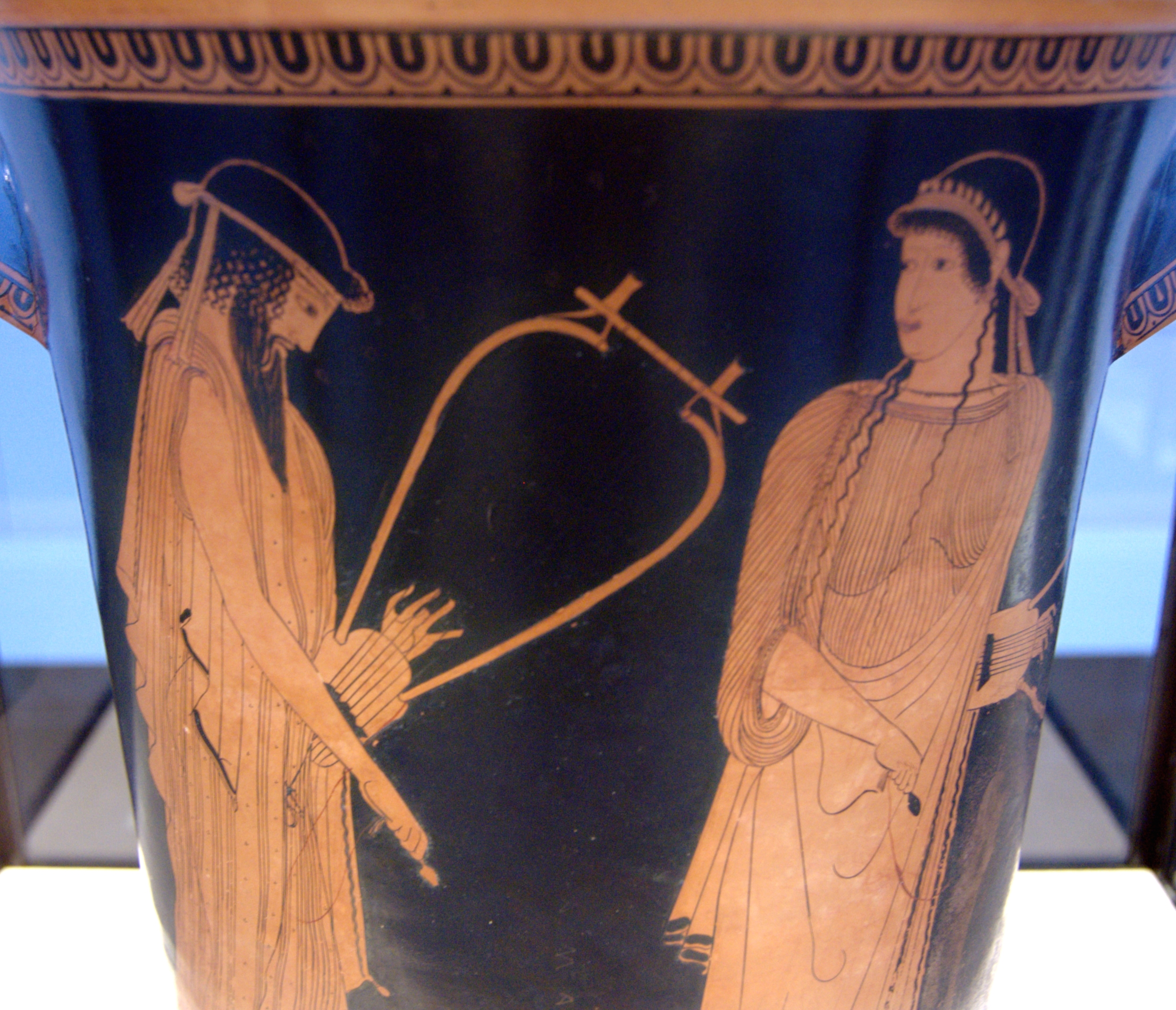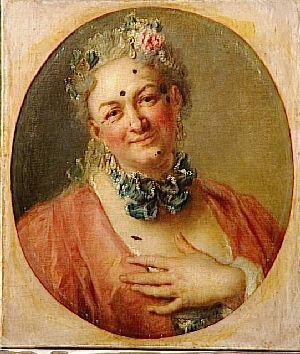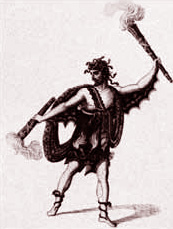|
Les Fêtes D'Hébé
''Les fêtes d'Hébé, ou Les talens lyriques '' (''The Festivities of Hebe, or The Lyric Talents'') is an ''opéra-ballet'' in a prologue and three ''entrées'' (acts) by the French composer Jean-Philippe Rameau. The libretto was written by Antoine Gautier de Montdorge (1707–1768). The work was first performed on 21 May 1739 by the Académie royale de musique at its theatre in the Palais-Royal in Paris. Performance history ''Les fêtes d'Hébé'' was Rameau's second ''opera-ballet''; his first, ''Les Indes galantes'', had appeared in 1735. It was first performed at the Paris Opéra on 21 May 1739. The famous dancer Marie Sallé appeared as Terpsichore in the third entrée. Montdorge was a friend of Rameau's patron Alexandre Le Riche de La Poupelinière. His libretto came in for heavy criticism and the second ''entrée'' had to be revised with the aid of Simon-Joseph Pellegrin, who had written the words for Rameau's first opera, ''Hippolyte et Aricie''. In spite of the weak libr ... [...More Info...] [...Related Items...] OR: [Wikipedia] [Google] [Baidu] |
Portrait Of Jean-Philippe Rameau - Joseph Aved
A portrait is a painting, photograph, sculpture, or other artistic representation of a person, in which the face and its expressions are predominant. The intent is to display the likeness, personality, and even the mood of the person. For this reason, in photography a portrait is generally not a snapshot, but a composed image of a person in a still position. A portrait often shows a person looking directly at the painter or photographer, in order to most successfully engage the subject with the viewer. History Prehistorical portraiture Plastered human skulls were reconstructed human skulls that were made in the ancient Levant between 9000 and 6000 BC in the Pre-Pottery Neolithic B period. They represent some of the oldest forms of art in the Middle East and demonstrate that the prehistoric population took great care in burying their ancestors below their homes. The skulls denote some of the earliest sculptural examples of portraiture in the history of art. Historical portraitu ... [...More Info...] [...Related Items...] OR: [Wikipedia] [Google] [Baidu] |
Soprano
A soprano () is a type of classical female singing voice and has the highest vocal range of all voice types. The soprano's vocal range (using scientific pitch notation) is from approximately middle C (C4) = 261 Hz to "high A" (A5) = 880 Hz in choral music, or to "soprano C" (C6, two octaves above middle C) = 1046 Hz or higher in operatic music. In four-part chorale style harmony, the soprano takes the highest part, which often encompasses the melody. The soprano voice type is generally divided into the coloratura, soubrette, lyric, spinto, and dramatic soprano. Etymology The word "soprano" comes from the Italian word '' sopra'' (above, over, on top of),"Soprano" '' |
Marie Pélissier
Marie Pélissier or sometimes Pelissier (1706/1707 – March 21, 1749) was a French operatic soprano. At the Paris Opera in 1722, she began her career, which was noted for her artistic skill and a scandal, until her retirement in 1741. Career and scandal Pélissier debuted at the Paris Opera in 1722, soon thereafter marrying Victor Pélissier and appearing at his theater in Rouen. She returned to Paris after his bankruptcy, singing at the Paris Opera again on May 16, 1726 in a performance of Pascal Collasse's ''Thétis et Pélée'', in which she won great plaudits. Later in the year she created the role of Thisbé in '' Pirame et Thisbé'' by François Francoeur and François Rebel. Her performance attracted the notice of Catherine-Nicole Le Maure, who returned from a retirement and incited a rivalry which grew to include their respective supporters, the ''mauriens'' and the ''pélissiens'' as well. This conflict included "disputes" during the first run of Pirame et Thisbé. ... [...More Info...] [...Related Items...] OR: [Wikipedia] [Google] [Baidu] |
Naiad
In Greek mythology, the naiads (; grc-gre, ναϊάδες, naïádes) are a type of female spirit, or nymph, presiding over fountains, wells, springs, streams, brooks and other bodies of fresh water. They are distinct from river gods, who embodied rivers, and the very ancient spirits that inhabited the still waters of marshes, ponds and lagoon-lakes such as pre-Mycenaean Lerna in the Argolis. Etymology The Greek word is (, ), plural (, ). It derives from (), "to flow", or (), "running water". Mythology Naiads were often the object of archaic local cults, worshipped as essential to humans. Boys and girls at coming-of-age ceremonies dedicated their childish locks to the local naiad of the spring. In places like Lerna their waters' ritual cleansings were credited with magical medical properties. Animals were ritually drowned there. Oracles might be situated by ancient springs. Naiads could be dangerous: Hylas of the '' Argo''’s crew was lost when he was taken ... [...More Info...] [...Related Items...] OR: [Wikipedia] [Google] [Baidu] |
Bass-baritone
A bass-baritone is a high-lying bass or low-lying "classical" baritone voice type which shares certain qualities with the true baritone voice. The term arose in the late 19th century to describe the particular type of voice required to sing three Wagnerian roles: the title role in ''Der fliegende Holländer'', Wotan/Der Wanderer in the ''Ring Cycle'' and Hans Sachs in '' Die Meistersinger von Nürnberg''. Wagner labelled these roles as ''Hoher Bass'' ("high bass")—see fach for more details. The bass-baritone voice is distinguished by two attributes. First, it must be capable of singing comfortably in a baritonal tessitura. Secondly, however, it needs to have the ripely resonant lower range typically associated with the bass voice. For example, the role of Wotan in ''Die Walküre'' covers the range from F2 (the F at the bottom of the bass clef) to F4 (the F above middle C), but only infrequently descends beyond C3 (the C below middle C). Bass-baritones are typically divide ... [...More Info...] [...Related Items...] OR: [Wikipedia] [Google] [Baidu] |
Alcaeus Of Mytilene
Alcaeus of Mytilene (; grc, Ἀλκαῖος ὁ Μυτιληναῖος, ''Alkaios ho Mutilēnaios''; – BC) was a lyric poet from the Greek island of Lesbos who is credited with inventing the Alcaic stanza. He was included in the canonical list of nine lyric poets by the scholars of Hellenistic Alexandria. He was a contemporary of Sappho, with whom he may have exchanged poems. He was born into the aristocratic governing class of Mytilene, the main city of Lesbos, where he was involved in political disputes and feuds. Biography The broad outlines of the poet's life are well known. He was born into the aristocratic, warrior class that dominated Mytilene, the strongest city-state on the island of Lesbos and, by the end of the seventh century BC, the most influential of all the North Aegean Greek cities, with a strong navy and colonies securing its trade-routes in the Hellespont. The city had long been ruled by kings born to the Penthilid clan but, during the poet's life, the ... [...More Info...] [...Related Items...] OR: [Wikipedia] [Google] [Baidu] |
Pierre Jélyotte
Pierre Jélyotte (13 April 1713 – 11 September 1797) was a French operatic tenor, particularly associated with works by Rameau, Lully, Campra, Mondonville and Destouches. Life and career Born Pierre Grichon in Lasseube, he studied in Toulouse (voice, harpsichord, guitar, violin, composition) and made his stage debut in Paris as a singer at the Concert Spirituel in 1733. That same year, he made his debut at the Opéra de Paris, in ''Les fêtes grecques et romaines'', by François Colin de Blamont. He thereafter created several roles in opera by Jean-Philippe Rameau, such as; ''Hippolyte et Aricie'', ''Les Indes galantes'', '' Dardanus'', and ''Zoroastre'', as well as in opera by Jean-Baptiste Lully, André Campra, and André Cardinal Destouches. In all he sang some 150 roles, sometimes dressed as a woma He often appeared at Court in Fontainebleau, where he sang Daphnis in ''Daphnis et Alcimadure'' by Jean-Joseph de Mondonville, and Colin in ''Le devin du village'' by ... [...More Info...] [...Related Items...] OR: [Wikipedia] [Google] [Baidu] |
Haute-contre
The haute-contre (plural hautes-contre) was the primary French operatic tenor voice, predominant in French Baroque and Classical opera, from the middle of the seventeenth century until the latter part of the eighteenth century. History This voice was predominantly used in male solo roles, typically heroic and amatory ones, but also in comic parts, even ''en travesti'' (see apropos the portrait reproduced below and representing Pierre Jélyotte made up for the female title role of Rameau's ''Platée''). Lully wrote 8 out of 14 leading male roles for the voice; Charpentier, who was an haute-contre himself, composed extensively for the voice-part, as did Rameau and, later, Gluck. The leading ''hautes-contre'' of the ''Académie Royale de Musique'' that created the main roles of Lully's operas, at the end of the seventeenth century, were Bernard Clédière (who started off as a ''taille'', a lower Tenor voice type) and Louis Gaulard Dumesny. Notable ''hautes-contre'' of the eighteent ... [...More Info...] [...Related Items...] OR: [Wikipedia] [Google] [Baidu] |
Sappho
Sappho (; el, Σαπφώ ''Sapphō'' ; Aeolic Greek ''Psápphō''; c. 630 – c. 570 BC) was an Archaic Greek poet from Eresos or Mytilene on the island of Lesbos. Sappho is known for her Greek lyric, lyric poetry, written to be sung while accompanied by music. In ancient times, Sappho was widely regarded as one of the greatest lyric poets and was given names such as the "Tenth Muse" and "The Poetess". Most of Poetry of Sappho, Sappho's poetry is now lost, and what is extant has mostly survived in fragmentary form; only the "Ode to Aphrodite" is certainly complete. As well as lyric poetry, ancient commentators claimed that Sappho wrote elegiac and iambic poetry. Three epigrams attributed to Sappho are extant, but these are actually Hellenistic imitations of Sappho's style. Little is known of Sappho's life. She was from a wealthy family from Lesbos, though her parents' names are uncertain. Ancient sources say that she had three brothers; Charaxos (Χάραξος), Larichos ( ... [...More Info...] [...Related Items...] OR: [Wikipedia] [Google] [Baidu] |
Zephyrus
In ancient Greek religion and myth, the Anemoi (Greek: , 'Winds') were wind gods who were each ascribed a cardinal direction from which their respective winds came (see Classical compass winds), and were each associated with various seasons and weather conditions. They were the progeny of the goddess of the dawn Eos and her husband Astraeus. Etymology The earliest attestation of the word in Greek and of the worship of the winds by the Greeks, are perhaps the Mycenaean Greek word-forms , , , , i.e. 'priestess of the winds'. These words, written in Linear B, are found on the KN Fp 1 and KN Fp 13 tablets. Mythology The Anemoi are minor gods and are subject to the god Aeolus. They were sometimes represented as gusts of wind, and at other times were personified as winged men. They were also sometimes depicted as horses kept in the stables of the storm god Aeolus, who provided Odysseus with the Anemoi in the ''Odyssey''. The Spartans were reported to sacrifice a horse to t ... [...More Info...] [...Related Items...] OR: [Wikipedia] [Google] [Baidu] |
Charites
In Greek mythology, the Charites ( ), singular ''Charis'', or Graces, were three or more goddesses of charm, beauty, nature, human creativity, goodwill, and fertility. Hesiod names three – Aglaea ("Shining"), Euphrosyne ("Joy"), and Thalia ("Blooming")Hesiod, ''Theogony''907 ff – and names Aglaea as the youngest and the wife of Hephaestus. In Roman mythology they were known as the , the "Graces". Some sources use the appellation "Charis" as the name of one of the Charites, and equate her with Aglaea, as she too is referred to as the wife of Hephaestus. The Charites were usually considered the daughters of Zeus and Oceanid Eurynome. Rarely, they were said to be daughters of Dionysus and Coronis or of Helios and the Naiad AeglePausanias, ''Description of Greece''9.35.5 or of Hera by an unnamed father. Other possible names of their mother by Zeus are Eurydome, Eurymedousa, or Euanthe. Homer identified them as part of the retinue of Aphrodite. The Charites were also associa ... [...More Info...] [...Related Items...] OR: [Wikipedia] [Google] [Baidu] |
Baritenor
Baritenor (also rendered in English language sources as bari-tenor or baritenore) is a portmanteau (blend) of the words "baritone" and "tenor." It is used to describe both baritone and tenor voices. In ''Webster's Third New International Dictionary'' it is defined as "a baritone singing voice with virtually a tenor range." However, the term was defined in several late 19th century and early 20th century music dictionaries, such as ''The American History and Encyclopedia of Music'', as "a low tenor voice, almost barytone sic.html"_;"title="'sic">'sic''" _In_opera Baritenor_(or_its_Italian_language.html" "title="sic">'sic''.html" ;"title="sic.html" ;"title="'sic">'sic''">sic.html" ;"title="'sic">'sic''" In opera Baritenor (or its Italian language">Italian form, ''baritenore'') is still used today to describe a type of tenor voice which came to particular prominence in Rossini's operas. It is characterized by a dark, weighty lower octave and a ringing upper one but with sufficient ... [...More Info...] [...Related Items...] OR: [Wikipedia] [Google] [Baidu] |







.jpg)
